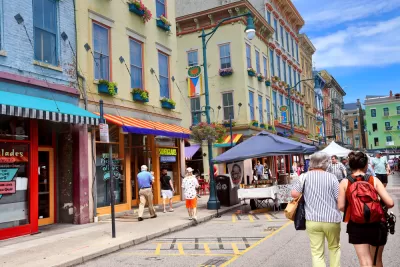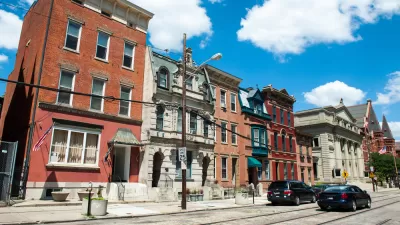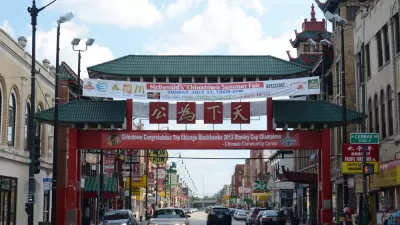The housing market in the neighborhood of Over-the-Rhine is a 'segregation machine.'

The Black population in Over-the-Rhine, one of Cincinnati's hippest urban neighborhoods, "has declined by 43% in the last decade," reports Monique John, citing recent data from the United States Census Bureau. The number of white residents in the neighborhood increased by 90 percent in the same span.
One of the most prominent narratives to emerge in the news about the latest population figures from the Census focused on the growing number of Minority groups, and the declining share of whites in the U.S. population. In the case of this revitalized urban area, the opposite seems to be true, however.
Earlham College economics professor Jonathan Diskin is quoted in the article describing the market in Over-the-Rhine as a "segregation machine."
Diskin calls the process gentrification, and says the segregation of the neighborhood has been driven by "a lack of housing subsidies or restrictions on rental costs, plus the skyrocketing costs of its market-rate units, among other issues."
Over-the-Rhine Community Council member Mike Bootes is also quoted in the article mentioning that the demographic numbers for Over-the-Rhine could help build a political coalition to support affordable housing efforts like Issue 3, which Cincinnati voters rejected at the ballot box in May 2021.
FULL STORY: Economist: For Over-the-Rhine, 'the market is a segregation machine'

Study: Maui’s Plan to Convert Vacation Rentals to Long-Term Housing Could Cause Nearly $1 Billion Economic Loss
The plan would reduce visitor accommodation by 25,% resulting in 1,900 jobs lost.

North Texas Transit Leaders Tout Benefits of TOD for Growing Region
At a summit focused on transit-oriented development, policymakers discussed how North Texas’ expanded light rail system can serve as a tool for economic growth.

Using Old Oil and Gas Wells for Green Energy Storage
Penn State researchers have found that repurposing abandoned oil and gas wells for geothermal-assisted compressed-air energy storage can boost efficiency, reduce environmental risks, and support clean energy and job transitions.

Texas State Bills Could Kill Transit Funding in Dallas, Austin
State lawmakers could pull funding from the state’s largest transit agency and the ambitious Project Connect, a voter-approved transit project in Austin.

Opinion: DC Encampment Sweeps Hide, but Don’t Solve, Homelessness
President Trump recently ordered the clearing of encampments built by unhoused people on federal land in Washington, D.C.

Santa Barbara Could Build Housing on County Land
County supervisors moved forward a proposal to build workforce housing on two county-owned parcels.
Urban Design for Planners 1: Software Tools
This six-course series explores essential urban design concepts using open source software and equips planners with the tools they need to participate fully in the urban design process.
Planning for Universal Design
Learn the tools for implementing Universal Design in planning regulations.
Ascent Environmental
Borough of Carlisle
Institute for Housing and Urban Development Studies (IHS)
City of Grandview
Harvard GSD Executive Education
Toledo-Lucas County Plan Commissions
Salt Lake City
NYU Wagner Graduate School of Public Service





























